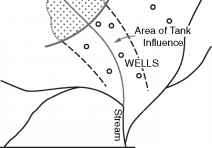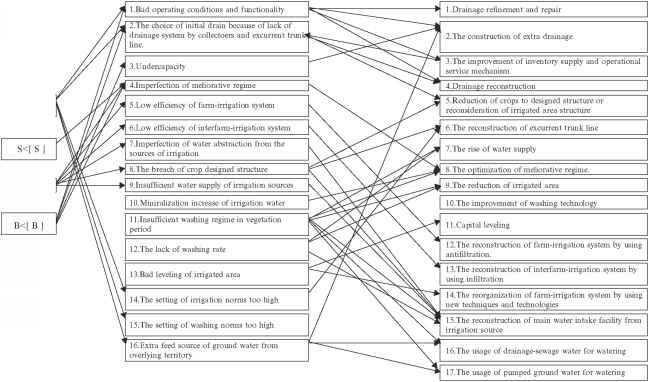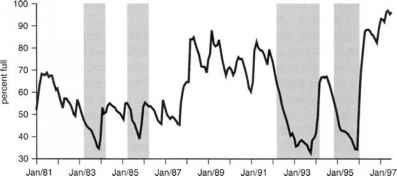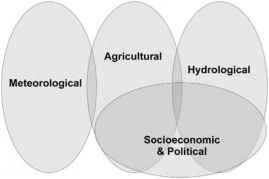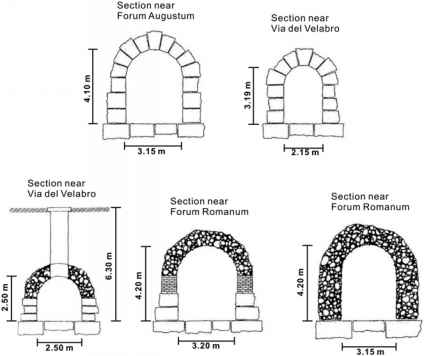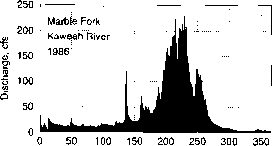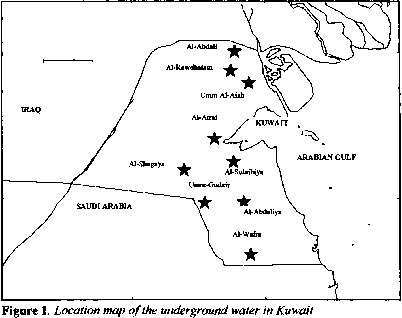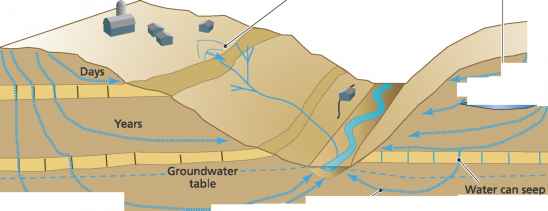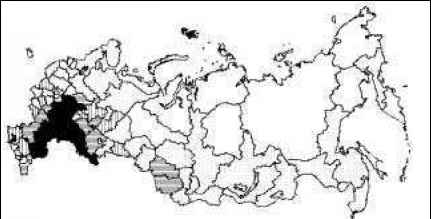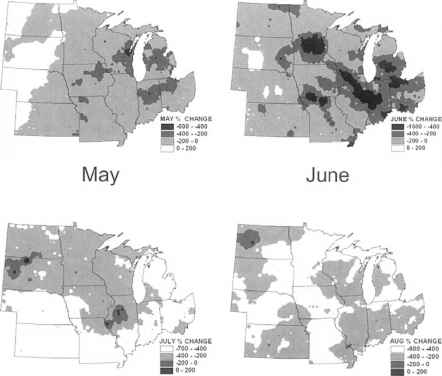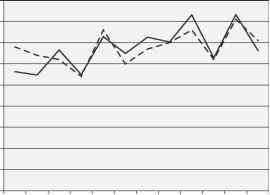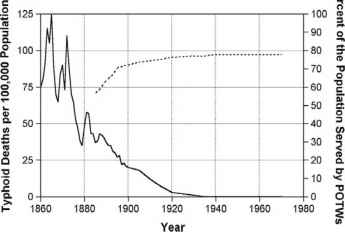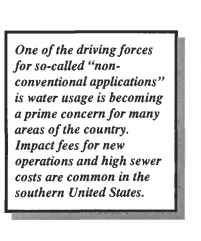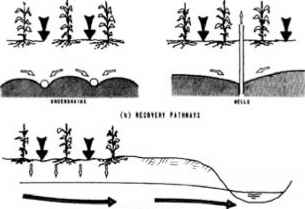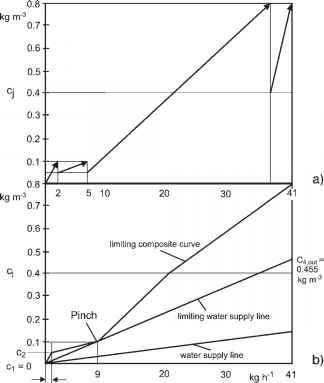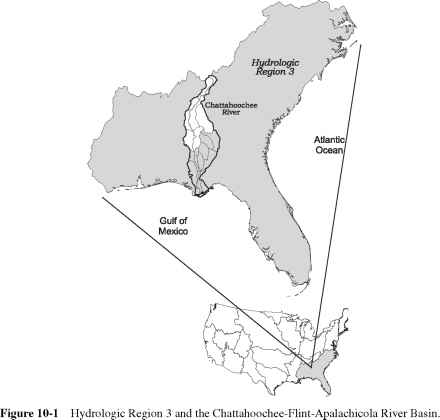Water Crisis FAQ
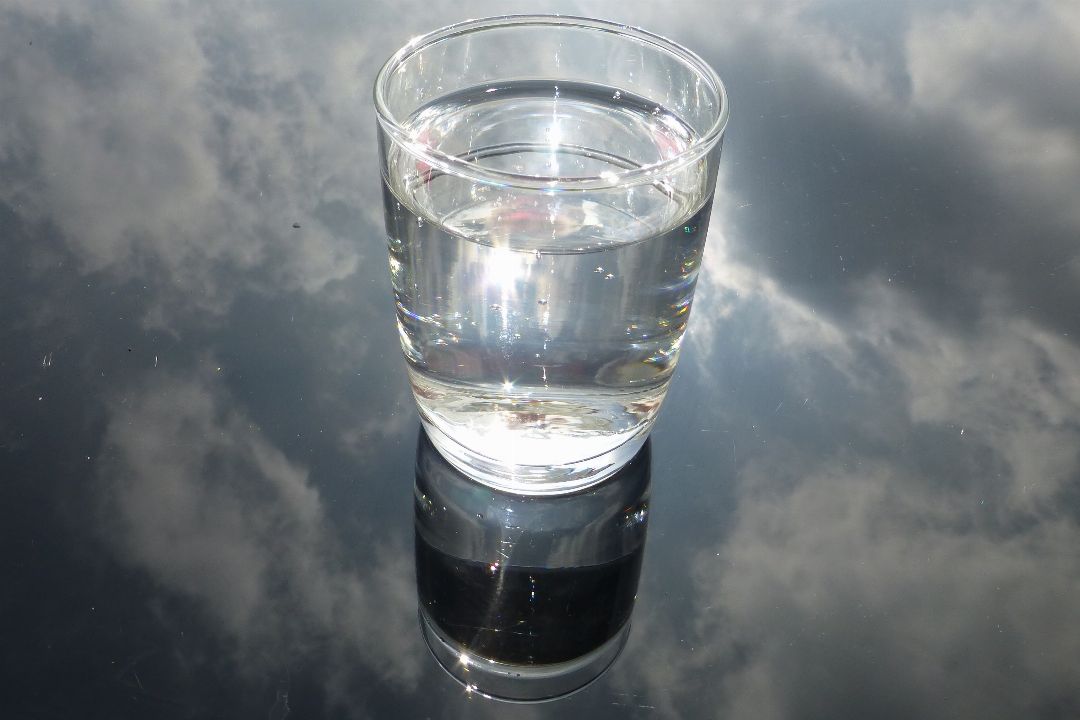
Water crisis occurs in different forms. Besides, the causes for the crisis differ depending on circumstances. But, in most cases, water challenges revolve around quality, access and sustainability. The best quality waters tend to be expensive to access. This means only a few individuals can access clean waters. Well, there are more challenges when it comes to water. That is why many people are asking burning questions this article would like to address.
Sometimes it is surprising to hear there’s water shortage in most parts of the world when 75% of the world is covered by water. The truth is, abundant as the water bodies may be, it may take ages before everyone gets access to clean and cheap water.
The water issue doesn’t end at just water availability or access. Consuming contaminated water may lead to conditions or illnesses. This compounds the situation further. Read on to get answers to some of the most common water crisis questions.
Problems force thinkers to create solutions. When it comes to water, treatment options like chlorine are in use. This helps minimize infections and outbreaks like cholera. Besides, the fact that good water drinking habits boosts the immunity makes it necessary to have your water in plenty and regularly.
Some people wonder how to deal with such situation. In some places water is a basic need that is readily available while in other areas you have to struggle to get it. Another sad fact is the fact that some humans are responsible for the absence of steady supply of water. The reason behind this is to satisfy their personal needs and greed. They are so mean that they do not care the consequences of this to other people. We will discuss everything to do with water scarcity. This will broaden our understanding of the same and help us find possible solutions to some of these problems.
Frequently Asked Questions
More than 1 billion of the people on earth do not have access to water! This is ridiculous! Such number is so big that it contributes to the global water crisis. Other than the close to 1.2 billion whose access to water is blocked, there is another lot of people who have partial access to water. The number of this lot stands at 2.5 billion. These are just not any other statistics! These are people, humans like you and me not able to access clean water.
When totaled, you already have close to 4 billion human beings having problem getting water. This affects their health and through this endless diseases and outbreaks come up. In fact, some people drink extremely dirty water because that is all they have access to. For some, they succumb and lose their lives. Others have had immune systems that mutilated to be able to withstand the hard conditions. If this goes on, more people may lose their lives and the world would be a bad place to be.
Water scarcity can be defined in two ways. The first case is when the supply of water is insufficient compared to the demand. On the other hand, lack of access to clean water can also be termed as water scarcity. In both cases, there are casualties, but, it’s more severe in the latter case. When there’s no enough clean water, every living thing is affected.
Water scarcity can be natural or influenced by men. For instance, most arid areas experience scarcity. This inadequacy is mainly caused by the irregular and insufficient rains that are mostly unreliable. In other places, poor infrastructure in place makes it hard to supply enough water to needy areas. In some situations, some individuals choose to hijack water sources and sell water meant for needy people for their own benefit. The sad bit is the fact that some of these individuals hold high positions in societies and are influential people.
一个简单的解决问题的方法是攻击源头e. One question to ask ourselves when coming up with a solution is what, where, and who are the sources of this water crisis. Beyond doubt, plastics are a major source of water crisis. These toxic materials end up in water bodies and contaminate the water. Besides, they also enter the soils and emit chemicals that end up in the water.
Finding alternatives to plastic material will do our water sources a lot of good. The world today is controlling the production and usage of plastic material. That may not be enough. Even the little plastic production is causing damage to the world. If we could get rid of plastics production for good we would go far. Besides, water bodies should be protected and those encroaching dealt with properly.
There should be campaigns as well. People need to know what their actions do to the water bodies. Until then, they will keep destroying these sources of life.
A quarter of the world has no access to clean water. This is close to 2 billion people. The figures are staggering and that explains the high mortality rate thanks to water borne diseases such as cholera. To put this figure into perspective, only two out of three people in the world have access to clean water. If these three interact, and only one of them has access to clean water, chances of them infecting each other with illnesses increase.
It is sad to hear that 11% of the world population cannot access steady water supply. This means, sometimes they get clean water while sometime they have to put up with contaminated water. This has a negative impact on their health and that explains why new illnesses will continue to emerge every other day.
Most pandemics and epidemics have resulted from water related illnesses. This shows how important water is to our lives and the impact it may have in our lives. Having access to clean water is not sufficient. Those that cannot access this water will get infected and transfer the sickness to the rest through day to day interactions.
The major cause of water crisis is water pollution. Responsible for this is industrialization. Through mushrooming of industries, water bodies end up as destinations for toxic wastes. This reduces the quantity of clean water leading to major water crisis in the world. Some people and organizations also misuse and/or overuse. This means other regions are left with little water no water at all. That leaves the other regions with the option of consuming dirty water.
Climate change and human settlements also impact water crisis. The former is sometimes a consequence of the latter. Humans continue to destroy the natural setting of earth and this adversely affects the clean water supply.
Unavailability of proper institutions to manager water resources has also contributed to water crisis. In the end, only the powerful people have access to water. This explains why there’s so much corruption in water management. And that compounds further the water crisis in the world.
Research has it that it would take five years to solve the current world water crisis. The total amount needed would be $1Trillion. That translates to $200 billion a year. At the moment, concerned bodies are contributing as little as $8billion a year. The contribution is significant, but less effective when compared to the total need. That means it may take even more time and money if we continue operating the way we are.
Experts advise money is not enough to tackle this issue. There is a need to shift our thoughts and reorganize our ways. Only then can we attain our targets. If we change the way we think, we will also spend lesser money than we need and we will control the crisis the world is experiencing today. One of the things the world and its people need to work on is protecting natural sources of water. Also, we have to stop disposing waste to our water bodies. That will save us time and money to get rid of the crisis.
Water is tied and ties a lot of things. For instance, when there’s no water, plants have no supply to generate and grow. When plants die, the land becomes arid. This leads to worse consequences. Agriculture is one of the economic activities holding the world today. When there is no water, plants won’t survive and that means the decline of death of agriculture. Not only will people lose their income, they will also lose their source of food. This means death and other pandemics.
You lose your water and all of a sudden sanitation is all gone. That is why you need a steady supply of water. When there’s no proper sanitization, illnesses and break outs become rampant. The worst case scenario is where everyone loses their lives.
Water shortage comes about because or natural or man-made influences. For instance, drought may cause water shortage. This is a condition none of us has control over. It can be so bad sometimes that people lose their lives. For man-made shortages, this can be tamed through strict and punitive policies.
More than 25% of the world consumes contaminated water. This water is mixed with serious dirt like human excretion. If the body excreted these substances, taking them in the same form they were gotten rid of can disastrous. In terms of numbers, you have more than 2 billion human beings drinking water mixed with stool and urine. If diarrhea alone can cause the death of 485,000 people annually, you can imagine the total number of lives lost cumulatively due to water borne diseases.
Every other day, these germs come up and the existing ones keep mutating. That means the existing medications become less effective thus an increase in mortality rate. Statistics has it that 5000 children lose their lives daily. It’s just sickening.
Typhoid, cholera, giardia, dysentery, E.coli, hepatitis A, and salmonella are some of the commonest water borne diseases today. These infections continue to kill billions of poor people with no access to clean water. For this to change, we all have to play our roles correctly.
Top of the list is Libya. The North African country is facing the severest case of water shortage in the world. One of the major causes of water crisis is political instability as leaders focus on power rather than development. Citizens must be healthy and water is a must for a country to develop. Libya has been facing political instability for a while and that may explain why some of its residents have no access to water.
西撒哈拉和也门也水的受害者crisis. To complete the top five nations with water problems is Djibouti and Jordan. Well, the condition is not permanent and that is why things change time and again. India has also been affected by water shortage time and again. From Asia, Pakistan is also a victim of water crisis. Generally, water crisis hugely affects developing, less developed and underdeveloped countries. It is also important to note that some developed countries to have water access problems.
报告显示,一些国家耗尽的风险雷竞技手机版appof water. This is either due to their poor management or continuous human distraction on water resources. One of those under high risk is South Africa. Cape Town is one of those places with higher risks. This African country is not the only one under high risk; Djibouti and India are also at risk. In fact, reports show that India is accelerating in terms of water loss. If no intervention is observed, the Asian country risks running dry any time soon.
While researchers estimate the world would have run out of water either between 2040 or 2050, the above mentioned countries would be dry by then. As these countries continue to build industries, they move closer to running dry and water crisis. Their high levels of poor water resource management will also be a source of their misfortune. Something has to be done if they want to continue having enough water supplies.
Contaminated water will always negatively affect your body. You will start to experience symptoms like diarrhea, stomach upsets and vomiting. Some people experience skin issues and kidney problems. Well, for internal problems it may be hard to tell but you will definitely experience discomforts that will compel you to go see a doctor. For those without access to the doctor, it may be harder for them since they may not really tell what is ailing them. The problem is when these illnesses become severe they may lead to death.
当你去医院,医生会使用their experience and the symptoms you present to rule out some illnesses. Lab tests may be done like stool microscopy or culture to find out the particular infection. H pylori and salmonella are some of the most common viruses resulting from contaminated water. At the end you have more illnesses including typhoid, cholera, and many more to deal with.
The problem with these illnesses is the fact that transmission is fast and deadly. That is why you will hear of outbreaks time and again. Now, once people are infected, they lose their lives fast. Some of these water borne diseases can kill one within 24 hours of infection without medical intervention.
死亡是悲伤!更糟糕的是当注意t people in the society lose their lives. That is why this water issue has to be addressed as soon as possible. We shouldn’t shift blame but continue to work together as teams to manage the world water crisis we’re experiencing. This would mean every nation dealing with their problems and seeking international support where unable to solve by self.
There are countries that may need external support to proceed. Well, for those, regions should work together to help each other out of water problems. We also need to change the way we perceive things. This will help us come with lasting solutions to some of these water diseases and crisis.
Human beings are the major sources of water pollution. Whether it is their action, or waste, they contribute significantly to water pollution. Reducing water pollution would mean reducing these human interactions with water. If you go to a river where people live close, you will be saddened by the pollution they’ve caused. An ocean or sea with people vising or staying in the vicinity will also exhibit spots of pollution.
Keeping humans and animals away from clean sources of water will protect these sources of fresh water. Besides, water bodies should be cleaned regularly and treated to stay free from pollution. This way, water pollution will significantly reduce.
Mass education will also help in reducing water pollution. Some people pollute water out of ignorance. Others do not without the knowledge that their little action will pile and be something significant in the end. Educating such people will reduce cases of water pollution out of ignorance.
地球上有很多水。不幸的是,辊筒y a small percentage is fit for human consumption. Technocrats and innovators have tried to come up with ways to purify water. But, there’s only an extent to which they can go.
For a minute, one may wonder how 0.3% could make drinkable water while 75% of the earth is covered by water. Well, water in the sea, rivers, lakes and all these huge water bodies is not considered safe for consumption unless treated. That is why the usable water capacity stands at 0.3% only when 75% of the earth is water.
If the water in the seas and oceans were safe to drink, the capacity of usable water would go higher. Unfortunately, this water is not safe unless treated. Treatment of water is an expensive process. And that makes it less accessible to the less privilege. If these naturally existing water bodies stored clean water with no need for treatment, the world would be a better place.
Fresh water is scarce. In fact, only a few places in the world can confidently say they have clean water. Top of the list is Brazil. The country has more than 8200 km square of sources of renewable water resources. Following distantly is Canada with about 4100 km square. And closing the top three lists in the world is Russia with 4067 km square. The aforementioned three are the leading in the world. Residents of these places must be the luckiest people alive.
US, China, and Colombia are other super powers with fresh water. That is why you have longer life spans of inhabitants of these places. Fresh water has a correlation with longer life spans. The countries with fresh water offer their citizens an opportunity to live longer and healthier, this means happiness too and more satisfaction.
It is also important to note that most of the countries with fresh water come from Asia and South America. According to statistics, those are the areas with highest number of sources of fresh water.
That is the last thing any human wants to imagine. But in case we get there, the world would be a desert. It would be so dry that earth would lose most of its plantations. One thing everybody would be interested in would be finding a solution to such a problem.
If we run out of water, the lands would dry. This means even plantations won’t survive. Humans rely on plants for oxygen. When these plants seize to exist, we will lose our oxygen and that will mean a significant number of people losing their lives.
Well, deserts have oasis. If the whole world becomes a desert, the super powers would fight for the oasis like they are doing today with mineral mines. Only the strong would access water and that means more loss of life. This means some people will have to be sacrificed for the rest of the survivors to access water. It would make the world a terrible place to be.
This is a question attracting mixed reactions. Well, the earth can run out of water or make more water. But all this depends on the people occupying this space. Two scenarios are likely to occur in future. At the moment, there are bodies working so hard to ensure water bodies are protected. At the same time, there are people encroaching forests and building on water bodies. Depending on who will be more effective in their efforts, the water bodies will increase or reduce relatively.
At the moment, the destroyers seem to be carrying the day. That is why we’re having a reduction in the levels of clean water. If things go on like this, the earth would have run out of water by 2040. If things change in between, there’s hope. The earth may continue to produce water enough to take care of all living things on it. That is why there’s a dire need to take care of the water resources and plants. That way, we will have enough water for everyone.
When you cut a plant, you will realize there’s some liquid inside. Human and animal bodies too have a massive liquid composition in their bodies. That said; you need water to balance these liquids inside the bodies of the humans, animals, and plants. This means without water we are all dead.
Water sustainability means taking care of these water bodies that we are able to continue using them for the longest time possible. The moment earth loses all its water; we would have lost all our lives. That is why we must strive to have sustainable water production and keep these sources of water clean. That way, we will longer lives and we will live healthier and happier.
Rationalizing water in our usage will help save water. You can recycle water and turn off taps when not using them. You should also ensure plumbing systems are okay and not leaking. That will ensure no water is wasted through leaks. Using water sparingly will go a long way in ensuring water sustainability. In the end we will save water and save our lives.
Purifying water depends on a lot of things. One of the considerations includes the source of impurity, your budget and the level of cleanliness you want to achieve. For instance, water with dangerous chemicals cannot be cleaned mechanically. That is why you have to know what kind of impurities exists in your water. Once you do, it will be easier to determine which cleaning method you will use.
There are different methods you can utilize to convert dirty water to clean water. One of the easiest and simplest ways to clean water is through boiling. However, this method applies when the level of impurities in the water are low. Boiling may not work for water with chemicals.
Using a water purifier and reverse osmosis are other alternatives to cleaning water. These require more skills unlike boiling water where you just heat the water and get it clean. Distillation, use of chlorine, and iodine are other great alternatives. Solar purification and clay vessel filtration are other good options. All the aforementioned techniques have pros and cons. Besides, their effectiveness depend on your circumstances and the water condition.
A good question! The answer is no! Why? This is because, 75% of earth is made of water and only 25% consisting of all these other things. But, we are running out of clean water. As human continue to cut down trees and practice deforestation, we continue to lose clean water. Besides, the cost of cleaning dirty water goes up considerably.
There are a few water bodies drying up by day. At the same time, others are deepening and broadening. This is a clear indication that we are not losing water. Instead, we’re having new water bodies come up and others dry up. This is a blessing to those living in areas where the water bodies are coming up. For the others living in drying areas, it is unfortunate for them.
As time goes by, we’re having humans encroach forests and build on water bodies. This may reduce the water levels on earth but we may never run out of water as a continent.
United States currently ranked 4thin 2011 in terms of source of clean water. In 2018, there was a report that was published insinuating US is running out of water. Others speculate, by the year 2040, US will have no water. Some of the states exhibiting signs of running out of water earlier include Texas and Kansas. They are not the only ones. About seven states in US show signs of running out of water. The others include New Mexico and Nevada. To add to the list, Oklahoma and Arizona look like they will dry out soon.
Now, these are just signs. The bad news is if things don’t improve, reality will hit and US will run out of water. The good news is, everything will be well if these residents and the governments work together to bring back water to US. It won’t be an easy experience but one worth pursuing.
Boiling water is one of the commonest water purification techniques. It is easy to do and does not cost much. Besides, it requires less time and won’t call for many requirements. The question of whether this method is good for you or not is subject to your circumstances.
It is a good option if you are working on a tight budget and don’t have much time to spare. If the source of your water is rain or a well, this is a good method to purify your water. The heat will soften the water and you will get rid of any living microorganisms in the water likely to cause infections.
Now, in some cases, the water you have access to may be exposed to deadly chemicals. In such an instance, boiling water is not a good idea. These deadly materials like lead etc. cannot be removed through heating. Instead, you should opt for more reliable methods. This will safeguard you and your loved ones.
Recommended Products
Water Freedom System
大多数国家面临的主要问题之一雷竞技手机版appall over the world is drought. Most people do not have access to the frequent flow of water, and for those who do, they end up paying more money just to have water in their homes. The Water Freedom System has been developed to help solve the drought problem that is likely to affect the world in the years to come. With this system, you are guaranteed that your family and generations to come will not suffer from water shortage. In addition to that, this system is very easy to build and is inexpensive, and is portable, meaning that you can carry it and use it somewhere else. With this water system, you are guaranteed clean and high-quality water, that tastes better than the one that you pay for. This method of getting water is based on a simple condensation principle where you harvest water from thin air. Moreover, you will not incur huge out-of-pocket expenses in building this water device as you just need a small startup amount and spare a maximum of three hours of your time to build the device. To get to know how this device is going to benefit you, then keep reading this article.More here...
Contents: Ebooks
Author: Chris Burns
Official Website:www.waterfreedomsystem.com
Price: $19.69
Water Freedom System

It is pricier than all the other books out there, but it is produced by a true expert and includes a bundle of useful tools.
I personally recommend to buy this ebook. The quality is excellent and for this low price and 100% Money back guarantee, you have nothing to lose.
Read full review...Multidecadal Drought Cycles in South Central New Mexico Patterns and Consequences
Extreme, regional droughts are the most common form of disturbance in semiarid ecosystems typified by relatively slow recovery rates. Drought-driven impacts can include regionally synchronized insect outbreaks, wildfires, and tree mortality (Swetnam and Betancourt 1990), as well as disastrous failures of agriculture, silviculture, and livestock production (Mainguet 1994). Drought conditions, accompanied by anthropogenic land mismanagement, have led to subsequent invasions of grasslands and farmlands bywoody shrubsand nonna-tive forbs and grasses, contributing to the modern desertification process manifested in many parts of the world (Archer et al. 1988). In theAmerican Southwest, the drought of the 1950s was one of the most severe climate events of the past millennium because of wide ramifications for the region's ecology (Herbel et al. 1972 Swetnam and Betancourt 1998), water resources (Thomas 1963), and economy (Regensberg 1996).
Study of sustaining groundwater resources through percolation ponds during droughts in India
The vagaries of climate change are already being felt in many countries including India. Droughts and floods have perhaps become more common. The time series of rainfall data for c. 100 years in a semi-arid regionof India shows (Fig. 1) that every fourth year is a drought year and every seventh year is a year of surplus water causing floods. Thus it becomes imperative for a country like India, situated in themonsoon region(other monsoon countries include Korea, Philippines, China, Japan, Bangladesh, Pakistan, Sri Lanka, Malaysia) to develop adaptive measures to counter the climate changes. Drought year (every 4th year on average) Fig. 1.Rainfall patternin Nalgonda district (Andhra Pradesh, India) for the last 100 years (1901-1996) showing drought every fourth year and excess rainfall in every seventh year.
Efficiency of Water Supply Assessment
Scientific basis for efficiency of water supply assessment is the empirical dependence of crop capacity on water consumption under differentclimatic regions。条件下的水资源缺乏, low water and land efficiency, it is suggested to take into account the sufficiency of water supply not only during the vegetation period but also its distribution within this period (that is, the regime of crop irrigation), and also the mineralization of irrigating water, which is not done when conducting the present cadastre. Efficiency of the water supply assessment for an irrigated area is calculated for every farm area. It consists of an average assessment over 3-5 years of actual water infiltration for crops conforming to the conditions of maximal crop growing. The irrigated area is considered supplied with water if 9.Insufficient water supply of irrigation sources 7.
Impact Of Climate Change On Hydrology And Water Resources
One of the majorimpacts of global warmingis likely to be on hydrology and water resources, which in turn will have a significant impact across many sectors of the economy, society, and environment (Figures 11.2 and 11.3). Characteristics of many ecosystems are heavily influenced by water availability. Water is fundamental for human life and many activities, in- FIGURE 11.2.Impact of climate change on water resourcesand agriculture FIGURE 11.2. Impact of climate change on water resources and agriculture Future climatic changes in the Nile River basin would be significant and possibly severe. For example, with 4 C warming and a 20 percent decrease in precipitation, Nile River flow decreases 98 percent. This represents a significant reduction in water supply (Gleick, 1993,1998). Based on the results of the river flow responses, climate variables alone can cause a 50 percent change in runoff in the Gambia River catchment.
Definition Of Drought
干旱的定义不是很简单,the question What is drought continues to pose a problem (Sivakumar, 1991). This is because drought could mean different things to different people, and there are probably as many definitions of drought as there are users of water. In general, a drought is when a shortfall in precipitation creates a shortage of water, whether it is for crops, utilities, municipal water supply, recreation, wildlife, or other purposes. According to a WMO definition (Bogardi et al., 1994), drought is a sustained, extended deficiency in precipitation. Operational definitions of drought vary from place to place and are crucial to identify the beginning and intensity of drought. There are three main types of drought meteorological, agricultural, and hydrological (National Drought Mitigation Center, 1996c). 1.Meteorological droughtis an expression of rainfall departure from normal over some period of time.
Case History of Water Pollution by PCB Release
Owing to a lack of environmental knowledge and governmental guidance, General Electric Company released about 500,000 lb of hazardous PCBs into Hudson River in New York State between 1947 and 1976 from its plants in Fort Edward and Hudson Falls. Hudson River is one of North America's great mountain streams, cruising through gorges, crashing over boulders, churning into a white-water delight, and eventually reaching the great Atlantic Ocean. For centuries, the great Hudson has been a reliable water resource for navigation, fishing, boating, swimming, winter sports, water supply, andnatural purification。Around Glens Falls, the Hudson runs into civilization, into industry, and, in turn, into an industrial disaster the pollution of more than 185 miles of the river with over half a million pounds of hazardous and poisonous PCBs. In 1977, PCB production was banned in the United States, and its release to the Hudson was stopped.
Will Human Civilization Face the Exhaustion of Water Resources Due to Global Change
The climate had always been changing and will continue to evolve in the future. So far the only acceptable conception has been based on the outputs of IPCC 12 , which declare that warming up of the Earth is caused by anthropogenic activities -specifically by emissions of carbon dioxide. But a series of scandals disclosed a specialized handling of the primary data so that the seriousness of the so far achieved results was challenged or even damaged. Nevertheless, the ever present question, which the public should ask with regard to climate change is, whether the planet will ever run out of water and similarly iffossil fuelswould ever be exhausted. Therefore, to simply compare the exploitation of water resources with deposits of crude oil, coal and earth gas is evidently not correct. The volume of water existing on the Earth is stable and is estimated to attain 1,386,100,000 km3 13 , and has never changed.
Ratio Of Lime To Drinking Water
Information given forquicklimealso applies tohydrated limeexcept that bin agitation must be provided. Bulk bin outlets should be provided with nonflooding rotary feeders. Hopper slopes vary from 60 degrees to 66 degrees. Volumetric or gravimetric feeders may be used, but volumetric feeders are usually selected only for installations where comparatively low feed rates are required. Dilution does not appear to be important, therefore, control of the amount of water used in the feeding operation is not considered necessary. Inexpensive hydraulic jet agitation may be furnished in the wetting chamber of the feeder as an alternative to mechanical agitation. The jets should be sized for the available water supply pressure to obtain proper mixing.
Impacts Of Droughts In South Africa
Drought impacts, however, are not the result only of insufficient rainfall or searing temperature. In most cases, drought impacts are the outcome of the interaction of a number of social and other human factors that can heighten the vulnerability of communities and various exposure units (e.g., vegetation) and reduce resilience of society and ecosystems to thenatural hazard(Dilley, 2000 Vogel et al, 2000). As a result of these components of drought, a number of impacts are recorded. The scale of these impacts also varies and can be tracked at various levels (e.g., regional, national, community, and household) of agricultural production. For example, production declined as a result of the 1980s and 1990sdroughts in southern Africa。Harvest failures of between 30 and 80 below-normal across the Southern African Development Community (SADC) region were recorded.
Harrison 1986 Simulating Drought In Sa Reference
Abrams, L., Drought policy water issues, The African Water Page, http www.african- Forum on Drought, Secretarial and Ops Room, Johannesburg, October 8, 1992. Adams, L., A rural voice, strategies for drought relief, Indicator S. Afr., 10(4), 41-46, 1993. Alexander, W. J. R, Floods, droughts and climate change, S. Afr. J. Sci., 91, 403 08. Association for Rural Advancement (AFRA), Drought Relief and Rural Communities, Special Report No. 9, AFRA, Pietermaritzburg, 1992. Ballard, C, Drought and economic disasters South Africa in the 1980s, J. Interdiscipl, Hist., 17, 359-378, 1986. Bhalotra, Y. P. R, The Drought of 1981-1985 in Botswana, Department of Meteorological Services, Ministry of Works and Communications, Gaborone, Botswana, 1985. Bratton, M, Drought, food and social organization of small farmers in Zimbabwe, in M. Glantz (Ed.), Drought and Hunger in Africa Denying Famine a Future, Cambridge University Press, Cambridge, 1987, pp. 213-244. Bruwer, J.
Membrane Processes for Advanced Wastewater Treatment
Reverse osmosis (RO) is often associated with water treatment or ultrapure water production because of its ability to retain the dissolved ions (in the case of ultrapure water production, RO serves as pretreatment for ion exchange deionization). One successful commercialapplication of reverse osmosisis desalination of seawater or brackish water and production of bottled water. RO is also used with some success in removing arsenic from drinking water sources. RO may also be used to desalt effluents from a As described in Chapter 3,pervaporationis an energy-efficient technology that has been used commercially for alcohol dehydration, VOC removal from contaminated water, and hydrocarbon separations. The driving force of pervaporation processes is the chemical potential difference across the membrane between the feed and permeate the performance of pervapora-tion is not restricted by vapor-liquid equilibrium like distillation (Dutta et al., 1996).
An Overview of the Global Water Situation
According to the International Water Management Institute (IWMI), one in three people globally endures some form of water scarcity, one-quarter of the world's population lives in areas where water is physically scarce, and over one billion people live where water is economically scarce, or places where water is available in rivers and aquifers, but the infrastructure is lacking to make this water available to people.'' Fig. 1 shows a United Nations history of global water scarcity since 1950, and a projection to 2025. The World Water Institute states that water scarcity is not a factor of absolute quantity rather, it is a relative concept comparing the availability of water to actual use. In the United States and Europe, the average individual uses between 200 and 600 liters of water per day (UN - Coping with Water Scarcity, 2007 World Water Day, http www.unwater.
Drought Types and Vulnerability
Alltypes of droughtoriginate from a deficiency of precipitation (Wilhite and Glantz 1985). When this deficiency spans an extended period of time (i.e.,meteorological drought), its existence is defined initially in terms of these natural characteristics. However, the other commondrought types(即农业、hydro-logical socioeconomic) place greater emphasis on human or social aspects of drought, highlighting the interaction or interplay between the natural characteristics of the event and human activities that depend on precipitation to provide adequate water supplies to meet societal and environmental demands (Fig. 2.1). For example, agricultural drought is defined more commonly by the availability of soil water to support crop and forage growth than by the departure of normal precipitation over some specified period of time, ttere is not a direct relationship between precipitation and infiltration of precipitation into the soil.
Important Roles of the DRE Binding Proteins During Drought and Cold Stresses
初始dehyd之间的信号转导途径ration stress signal and gene expression. There are at least four signal transduction pathways two are ABA dependent (I and II) and two are ABA independent (III and IV). Protein synthesis is necessary for one of the ABA-dependent signal pathways (I). ABRE is involved in one of the ABA-dependent pathways (II). In one of the ABA-independent pathways, DRE is involved in the regulation of genes not only by drought and salt but also by cold stress (IV). Another ABA-independent pathway is controlled by drought and salt, but not by cold (III). Fig. 20.2. Signal transduction pathways between initial dehydration stress signal and gene expression. There are at least four signal transduction pathways two are ABA dependent (I and II) and two are ABA independent (III and IV). Protein synthesis is necessary for one of the ABA-dependent signal pathways (I). ABRE is involved in one of the ABA-dependent pathways (II).
The basis of drought contingency planning
Drought planning and water crisis management needs to be proactive, is is largely because overall policy, legislation, and specific mitigation strategies should be in place before a drought or water crisis affects the use of the country's water resources. Bruins (2001) provided the basic elements involved in the development of proactive drought contingency planning and their respective relationships, ese basic elements (Figure 24.1) involve drought risk analysis, drought impact assessment, and drought scenarios. Assessments have to be made of theimpact of droughton the various water resources, economic sectors, population centres, and the environment. Differenttypes of droughtshould be considered in the impact assessment studies. Drought scenarios have to be calculated on the basis of available information, including development of a frequency and severity index.
The Worlds Diminishing Freshwater Supply
On a global scale only about half of the world's population has a connection to a piped-water supply in the home, whereas 30 percent rely on wells or local village pipes, and about 20 percent have no access at all to clean water. World population is expected to grow by another 50 percent (another 3-4 billion people) in the next 50 years, so huge investments are needed to maintain the existing water supply infrastructure and develop new supply networks. As population grows and water supplies remain the same or diminish, it is expected that in the next 10 years about half the world's population will not have access to clean drinking water. Most of those without access to clean water will live in Africa, south and Central America, and southeast Asia. Many of the countries of the Middle East face a different prob-lem an extreme paucity of water of any kind.
Water Supply and Wastewater Management in Antiquity
In Hellenistic and Roman times, several water supply systems were constructed for Pergamon castle, which is situated on a rock with an 800 m long plateau, at a height of nearly 300 m over the town situated below it. We are here only interested in one of these systems the Madradag pipe 2 constructed during the rule of Eume-nas II (197-159 BC Garbrecht 1987). This pipe had a length of 42 km and started in the Madradag mountains at a height of 1230 m, that is 900 m higher than the rock of Pergamon. Three valleys had to be crossed and afterwards the Pergamon rock had to be climbed. Therefore, the pipe had to be operated under pressure. This was an extremely demanding requirement for the quality of pipe manufacturing, laying and sealing. The difference in the height of 900 m (from source to castle) corresponding to a pressure drop of 90 bar (9 MPa) alone for the nonflow-ing water column. Therefore, very stringent requirements had to be met. The pipes 1.
Water Supply and Wastewater Management in the Medieval Age
Monasteries founded by Cistercians, Premonstratensians and Benedictines in Europe during the 12th and 13th centuries were exemplary business undertakings for that time. Besides the monks and the abbot, numerous lay persons worked and prayed there, all requiring a reliable source of water. Frequently, a monastery was placed near a river and a ditch was dug, which was laid with a necessary gradient through the area of themonastery. Figure1.4 presents a system for water supply and wastewater discharge as a fundamental concept (Bond 1991). Fig. 1.4 Fresh water supply and wastewater discharge in monasteries (Bond 1991). Fig. 1.4 Fresh water supply and wastewater discharge in monasteries (Bond 1991). 1.2 Water Supply and Wastewater Management in the Medieval Age 5 First, the water flowed slowly through two sedimentation basins to a distribution house crossing the main ditch of the monastery. Pipes made either from tree trunks, ceramic material or lead were used for this purpose.
Long Term Effects of Drought on Ecosystems
Several studies characterize the ecological effect of the drought of 1988. Tilman and Downing (1994) provided documentation of drought effects on plant communities other than those in agriculture. They characterized the influence of the 1988 drought on plants at the Cedar Creek LTER in Minnesota, and they measured theeffects of droughtand the dynamics of recovery from drought against a known baseline. Indeed, it was not until 1993, the fifth year after the 1988 drought and the twelfth year of the Cedar Creek LTER, that the effects of the drought on the species richness in successional grasslands were no longer discernible. However, the effects of the 1988 drought were still clearly evident in the oak savanna complex in 1993. About 30 of mature pin oaks died during the drought, compared to only 10 of bur oaks. Most of these dead trees are still standing.
Drought caused by changes in Global Atmospheric circulation
Global oceanic andatmospheric circulation patternsundergo frequent shifts that affect large parts of the globe, particularly those arid and semiarid parts affected byHadley Cellcirculation. One of the better known variations in global circulation is known as the El Nino-Southern Oscillation. Fluctuations in global circulation can account fornatural disasters, including the Dust Bowl days of the 1930s in the U.S. plains states. Similar global climate fluctuations may explain the drought, famine, and desertification of parts of the Sahel and the greatfaminesof Ethiopia and Sudan in the 1970s, 1980s, and mid-2000s. Much of Africa, including the Sahel region, has become increasingly dry and desert-like over the past 100 years or more, and any attempts to restart agriculture and repopulate regions evacuated during previous famines in this region may be fruitless and lead to further loss of life. develop.
Properties Of Water In The Ground And Surface Water Systems
The volume of groundwater is 35 times the volume of freshwater in lakes and streams, but overall freshwater accounts for less than 3 percent of the planet's water. The united states and other nations have come to realize that freshwater is a vital resource for their survival and are only recently beginning to appreciate that much of the world's water resources have become contaminated by natural and human-aided processes. Most drinking water in the united states comes from surface reservoirs or is purified from rivers, yet approximately 40 percent of drinking water in the country comes from groundwater reservoirs about 80 billion gallons of groundwater are pumped out of these reservoirs every day in the united states. Groundwater is a limited resource since it is being pumped out of the ground faster than it is being replenished by natural processes.
Meteorological Indicators Of Drought
Drought conditions are basically due to a deficit of water supply in time and or space. The deficit may be in precipitation, stream flow, or accumulated water in storage reservoirs, ground aquifers, and soil moisture reserves. In describing a drought situation, it is important to understand its duration, spatial extent, severity, initiation, and termination. Depending on the areal extent, a drought can be referred to as a point drought, small-area drought, or a continental drought. The point and small-area drought frequency are very high but are not major sources of concern at the national scale, unless they continue for a prolonged period. When the areal extent of the drought Over time, a number of drought assessment methods have been proposed. Some methods are based on qualitative observations, some on scientific criteria, and others on actual field surveys. However, to date, no comprehensive assessment method is available that has universal appeal.
Snow Hydrology And Water Resources Western United States
Seasonally snow-covered areas of Earth offer special challenges for water resources management, challenges that arise from both hydrologic and social factors. Seasonal snowpacks account for the major source of the runoff for streamflow and groundwater recharge over wide areas of the midlatitudes. For example, in the western United States over 85 of the annual runoff from the Colorado River basin originates as snowmelt. Most of this is from a few small source areas in four western states, mostly above 2700 m, which comprise only 12 of the basin area. Globally, snowmelt runoff from Earth's mountains fills the rivers and recharges the aquifers that over a billion people depend on for their water resources. Future climate variability and change are expected to result in major changes in the partitioning of snow and rainfall and the timing of snowmelt, which will have important implications for water use and resource management in these regions.
Examples of Expanding Deserts and Drought Disasters
全球气候变化引raybet雷竞技最新起了许多领域planet that were previously experiencing temperate climates to suffer drought conditions. Drought is very different from normal desert processes. A drought is a prolonged reduction in theamount of rainfallfor a region. It is one of the slowest of all majornatural disastersto affect people, but it is also among the most severe, causing more deaths, famine, and displacement than most other more spectacular disasters. Drought often presages the expansion ofdesert environments, and regions like Africa's sub-Saharan Sahel have experienced periods of drought and desert expansion and contraction several times in the past few tens of thousands of years. At present much ofthe Sahara isexpanding southward, and peoples of the Sahel have suffered immensely. Droughts typically begin imperceptibly, with seasonal rains often not appearing on schedule.
Global water resources and ecosystems
In Fig. 4.1, the long-term average mean annual runoff (MAR) of rivers is shown. This is calculated using a global runoff model (Smakhtin, VU., Revenga, C. and Doll, P, unpublished). Between regions there is a large difference in runoff. The dark areas show high runoff and the light areas low runoff. As can be expected, high yearly runoff occurs in the tropics and the yearly runoff in the desert regions is very low. The centre of North America, Australia and central Asia are places in the world where the water resources are scarce. These are the potential hotspots when CC leads to a reduction in runoff. Ecosystems need a certain amount of water to subsist and this amount varies between regions and ecosystems. For the majority of the rivers in the world there is no recommendation on the environmental water requirement. To estimate the amount of water that ecosystems need worldwide, a modelling study is performed (Smakhtin, VU., Revenga, C. and Doll, P, unpublished).
喝Water Sources In Kuwait
Undergroundwater in Kuwaitcan be classified into two main categories brackish and fresh underground waters. The brackish water exists in the Kuwait Group Aquifer and Dammam Aquifer stretching east of the Arabian Peninsula and slightly sloping towards the Arabian Gulf. The main location of the brackish water wells are Sulaibia fields, Shagaya fields, Um-Qudair field and Al-Wafra and Al-Abdalia fields currently utilised by the KuwaitOil Company, in addition to wells in the agricultural areas of Al-Wafra and Al-Abdalia (Figure 1). In 1997, the quantity of brackish water withdrawn, including that used for blending with desalinated water, was 65.7 MIGPD4 . Bottled water is a generic term that describes all water sold in containers. Natural mineral water is by definition and regulation untreated product water extracted from a naturally protected source. It differs fundamentally from bottled spring water and tap water, which rely upon treatment as a means of ensuring portability5 .
Groundwater Contamination
公共卫生服务建立了限制the concentrations of dissolved substances (called total dissolved solids, or t.d.s.) in natural waters that are used for domestic and other purposes. The table of Drinking Water Standards for the United States lists these limits for the United States. Many other countries, particularly those with chronic water shortages such as many in the Middle East, have much more lenient standards. Sweet water is preferred for domestic use and has fewer than 500 milligrams (mg) of total dissolved solids per liter (L) of water. Fresh and slightly saline water, with t.d.s. of 1,000-3,000 mg L, is suitable for use by livestock and irrigation. Water with higher concentrations of t.d.s. is unfit for humans or livestock. Irrigation of fields using waters with high concentrations of t.d.s. DRINKING WATER STANDARDS FOR THE UNITED STATES There are more than 20,000 known and abandoned hazardous waste sites in the United States.
Drought Exceptional Circumstances
Drought conditions of some magnitude are present almost every year in some part of Australia because of its vast size and semiarid toarid climate。Such occurrences are a part of normal life and are not of major concern at the national level. Sustained droughts, usually lasting one to two years, possibly for three years, and extending across large tracts of the country have created great disasters. These are of relatively less frequent occurrence, and each of them has different spatial, duration, and intensity characteristics. When drought conditions are so intense and protracted that they are beyond those that can reasonably be factored into normal risk management strategies, they are termed drought exceptional circumstances (Lembit, 1995). In practice, this is a drought of such rarity and severity that it occurs no more than once in every 20 to 25 years and is more than 12 months in duration (Clark et al., 2000 Dixon, 1995).
Future of Water Resources in Turkey
However, not all of the renewable water resources can be utilized because of economic and technical reasons. Exploitable portions of surface runoff, inflow from bordering countries, and groundwater are 95, 3, and 12 billion m3 , respectively. Thus, the total of exploitable water resources amount to 110 billion m3 . The projections for future water consumption would be valid on the condition that the water resources are protected from pollution at least for the next 25 years. It is imperative that available resources have to be evaluated rationally so as to provide clean and sufficient water resources for the next generation. Because of the climatic conditions of Turkey, the precipitation-flow relationships can change not only seasonally but also from year to year and natural water supply can falls to minimum levels in summer time, when the demands are at the highest levels.
Historical Examples Of Drought
Short-term drought occurred in many places in the world during the 20th century. western Europe, including England, experienced years of drought on a number of occasions, as did parts of the United States. South America, Africa, and Asia have also known years in which drought conditions occurred. In the 1960s, drought appeared in the northeastern United States. Winter snows failed in the western United States 1975-77. In 1976, western Europe suffered a summertime drought. In the late 1960s and in the early 2000s, parts of Africa suffered from drought. There are regions of the world where drought is normal. Some areas, such as the northeastern area of Brazil or other semi-arid regions, have regularly re-occurring patterns of drought. Drought in some areas of the Amazon basin, in 2005, was recorded as a 100-year drought.
IS there a drought iN Las Vegas
In the past decade the water seems to be diminishing. Lake Powell in Arizona has shrunk to half its capacity, and the Colorado River flow shrunk to a quarter of its typical rates. The Colorado River is used to supply 30 million people with water and irrigates four million acres of fertile farmland, producing数十亿痛单位larsworth of crops. The massive waterworks systems across seven states in the southwest were all built using river flow data for the Colorado River based on 20th century flow records. Now, studies of the ancient climate history in the region going back thousands of years indicate that the 20th century may have been one of the wettest on record for the region. The Hoover Dam, the California aqueduct, and cities across the region were all built during this high flow stage of the Colorado River, and water budgets for the region were calculated assuming these flows would continue.
Global water use trends Ever increasing
Water is fundamental for all kinds of development. Human development and well-being, industrial and economic development, energy production and agriculture all rely on the availability of (often abundant) water resources. However, there are distinct differences between sectors of society, their relationship to water and the future implications that changes in availability may have. The 20th century witnessed a sixfold increase in human water use, while the population increased 'only' threefold (Cosgrove and Rijsberman, 2000 Gleick, 2003). It is not only direct human water use that influences the quantity of water availability could also be indirectly affected through water quality deterioration due to increased pollution and deteriorated aquatic ecosystems (Koplin et al, 2002 Baresel and Destouni, 2005 Lindgren et al, 2007). Water use statistics, should be treated carefully as they may include large uncertainties.
Refrence Water Pollution
Stoddard. 2000. National water pollution control assessment model (NWPCAM) Version 1.1. Final report prepared by Research Triangle Institute, Research Triangle Park, NC for U.S. Environmental Protection Agency, Office of Policy, Economics and Innovation, Washington, DC, November, RTI Project Number 92U-7640-031. Carson, R. T., and R. C. Mitchell. 1983. The Value of Clean Water. The Public's Willingness to Pay for Boatable, Fishable, and Swimmable Quality Water. Water Resources Research, Vol. 29, No. 7, pp. 2445 -2454. July. Clark, J. W., W. Viessman, and M. J. Hammer. 1977. Water supply and pollution control, 3rd ed. John Wiley & Sons, New York. Eddy, S. 1932. The plankton of the Sangamon River in the summer of 1929. Illinois Natural History Survey Bulletin 19 469-486. Cited in Biology of water pollution A collection of selected papers on stream pollution, waste water and water treatment. U.S.
Impacts on Water Resources Users
In response, London officials abolished cesspools and made the use of water closets, drainage pipes, and centralized sewer collection systems mandatory. Over in the United States, city officials were also feeling the pressure of a populace weary of the noxious conditions associated with open sewers. In 1910, about 10 of the urban population was serviced by centralized collection systems (FWPCA, 1969). This number increased steadily in the following decades by 1940, 70.5 million persons (53 of the population) were served by them. Unfortunately, treating drinking water with chlorine and developing efficient sewage collection systems did little to help water resources users. Raw sewage deposited into streams, lakes, and estuaries was still raw sewage, whether it was discharged through an engineered wastewater collection system or through an open ditch. Collection systems just made the dumping more efficient and complete.
Physical Water Pollution
A common form ofphysical water pollutionisthermal pollution。这包括温水从冷却塔,floating debris, foam, andgarbage. Inhighly industrialized areas of the world,power plantsare used in generating electricity, where warmer water generated in the process is generally released back to the environment. In nuclear plants, water is used in large quantity to cool reactors. The discharge of high-temperature water into a natural body of water can affect the downstream habitats, therefore altering the ecological balance. It can lead to cultural eutrophication, thereby promoting algal bloom. This development has the potential of threatening certain fish species, as well as disturbing the chemistry of the receiving water body. from penetrating deeper waters. Weeds can make a lake unsuitable for swimming and boating. Algae and weeds die and become biodegradable material.
The Groundwater System
Water wells fill with water simply because they intersect the water table. The rocks below the surface are not always homogeneous, however, which can result in a complex type of water table known as a perched water table. Perched water tables result from impermeable bodies in the subsurface that create bodies of water at elevations higher than the main water table.
Figure 94 Grain production and intensity of drought in the RSFSR 19761990
Sown area not affected by drought, Some Western experts believe that the weather continued to be the dominant variable in Soviet agricultural production in this period. In 1978, Severin and Carey predicted that relatively favorable weather in the late 1970s would be reversed in the next years, bringing many problems forSoviet agriculture(1978). This did, indeed, happen. The second half of the 1970s was relatively good but the first half of the 1980s seemed to be one of the worst periods in terms of climate (Figure 9.4.). Major problems for Soviet agriculture were caused by large-scale droughts. Figure 9.4. shows that the fluctuation in grain production evidently correlated with the proportion of crop area affected by drought (this area is determined by the Hydrothermal Coefficient of Seljaninov). All the major drops in grain production in 1979, 1981, and 1984 correspond to the occurrence of severe droughts.
What The Current Drinking Water Standards Are
Sources of Contaminant in Drinking Water Sources of Contaminant in Drinking Water Byproduct of drinkingwater disinfectionByproduct of drinking water disinfection Byproduct of drinking water disinfection Byproduct of drinking water disinfection Sources of Contaminant in Drinking Water Sources of Contaminant in Drinking Water Sources of Contaminant in Drinking Water Sources of Contaminant in Drinking Water Sources of Contaminant in Drinking Water Sources of Contaminant in Drinking Water Sources of Contaminant in Drinking Water Sources of Contaminant in Drinking Water Sources of Contaminant in Drinking Water 3 EPA's surface water treatment rules require systems using surface water or ground water under the direct influence of surface water to (1) disinfect their water, and (2) filter their water or meet criteria for avoiding filtration so that the following contaminants are controlled at the following levels 4 No more than 5.0 samples total coliform-positive in a month.
Photocatalytic Water And Wastewater Treatment And Purification
Most of the common organic compounds found in water and wastewater, including phenolic compounds, chlorinated chemicals, surfactants, dyes, and pesticides, can be decomposed regardless of their molecular structure due to the nonselective attack of hydroxyl radicals. Many of these organic chemicals are classified as priority pollutants by the U.S. Environmental Protection Agency (EPA) or are in the drinkingwater contaminantcandidate list 26-31 . Their structure typically affects reaction kinetics and intermediates formation. Many research studies have focused on the photocatalytic degradability and reaction mechanisms of organic compounds, and identification of reaction by-products and their toxicity. In many cases, the reaction pathways are too complicated to elucidate the detailed steps. In addition, TiO2 photocatalysis has strong disinfection function toward microorganisms.
Spatial Characteristics of Drought
To characterize the spatial distribution of drought throughout the North Central Region, the HPR was associated with the geographic center of each county. ArcView GIS software (ESRI 1999) was used to interpolate a surface of HPR based on the spatial association between points using the inverse distance weighting (IDW) algorithm and a spatial moving average by associating 12 nearest neighbors to interpolate values of HPR between the 1055 points. Surface grid maps of HPR were developed based on monthly values of HPR at each location, and maps of cumulative HPR from May to July were produced. Two maps based on HPR were developed using this method one shows the 20-year mean (figure 4.7b) and one shows only 1988 values (figure 4.7a). The higher HPR values (i.e., HPR 15), based on the 20-year mean, occurred primarily in the western third of the region. However, in 1988, high values of HPR (HPR 30) occurred in central Michigan, Illinois, and Iowa, and in parts of Minnesota and North Dakota.
National Secondary Drinking Water Regulations
国家二级饮用水条例(NSD)WRs or secondary standards) are non-enforceable guidelines regulating contaminants that may cause cosmetic effects (such as skin or tooth discoloration) or aesthetic effects (such as taste, odor, or color) in drinking water. EPA recommends secondary standards to water systems but does not require systems to comply. However, states may choose to adopt them as enforceable standards. The following table summarizes the secondary standards. Table 6. Summary of National Secondary Drinking Water Regulations Table 6. Summary of National Secondary Drinking Water Regulations
Drought Monitoring In Australia
There may be few countries in the world where drought occurrence is more frequent than in Australia. Every state has developed its own procedures to identify and monitor the drought situation. Drought eased, but still serious Drought continues, rain urgently needed Potential yields severely cut by drought NSW Agriculture has been monitoring the monthly status of drought in New South Wales. Based on this assessment, the government has provided various forms of assistance to drought-affected people. To complete this procedure, Rural Land Protection Boards (RLPBs) supply the relevant data. The RLPBs supply the information in a standard format. The information given is on meteorological conditions agronomic conditions stock numbers (change from normal) livestock condition agistment of stock (change from normal) hand feeding (change from normal) water supply environmental conditions other drought-related factors and the overall recommendation of the board.
OnSite Wastewater Systems
Water wells As described in Chapter 3, nitrogen forms can be transformed when released to the environment. Because the oxidized form of nitrogen, nitrate nitrogen, is a public health concern in drinking water supplies, the areal loading of nitrogen is important. Source Leverenz, H. et al., Review of Technologies for theOnsite Treatmentof Wastewater in California, Report No. 02-2, prepared for the California State Water Resources Control Board, Sacramento, CA, Department of Civil and Environmental Engineering, University of California, Davis, 2002. Source Leverenz, H. et al., Review of Technologies for the Onsite Treatment of Wastewater in California, Report No. 02-2, prepared for the California State Water Resources Control Board, Sacramento, CA, Department of Civil and Environmental Engineering, University of California, Davis, 2002.
Droughts and wildfires
Fire is a natural component of many ecosystems. Often, it is the fire regime (frequency, intensity and timing) rather than drought that determines primary productivity as well as plant community (Pyne, 1997 Bond et al., 2005). Nevertheless, dry weather enhances the risk of biomass burning. For example, the severe drought of 1994 that damaged large amounts of woody plants in central and southern Spain Vegetation fires are always possible because plant biomass is a good fuel in our oxygen-rich atmosphere. Live biomass, however, does not burn easily because it has a high moisture content. Drought interacts with fires, increasing dead branches and leaf shedding. These materials (dead biomass or necromass) represent the fine fuels, which once dehydrated in hot and dry weather, become highly inflammable and increase the risk of fire. Although drought and wildfires share common causes, it cannot be concluded that more or larger fires will occur in more arid regions.
Droughts vines and frost fairs
Benson, L. et al. (2007)Anasazi(pre-Columbian Native American) migrations during the middle-12th and late-13th centuries - were they drought induced Climatic Change, 83, 187-213. Cook, E. R. et al. (2007) North American drought Reconstructions, causes, and consequences. Earth Science Reviews, 81, 93-134. Gill, R. B. (2000) The Great Maya Droughts Water, Life and Death. University of New Mexico Press, Albuquerque. Meko, D. M. et al. (2007) Medieval drought in the upper Colorado RiverBasin. GeophysicalResearch Letters, 34, doi 10.1029 2007GL029988. Stine, S. (1994) Extreme and persistent drought in California and Patagonia during medieval time. Nature, 369, 546-9. Woodhouse, C. A. et al. (2006) Updated streamflow reconstructions for the Upper Colorado River Basin. Water Resources Research, 42, doi 10.1029 2005WR004455.
Heatwaves and droughts
Bystudying weather和气候数raybet雷竞技最新据聚集来自世界各地,and transmitted from orbiting satellites, scientists can compare it with past records to work out how much the world has warmed up. But for many people, the evidence of climate change is much more obvious. They are suffering heatwaves that can raise temperatures to lethal levels, and living with droughts that make drinking water scarce, kill their crops and farm animals, and turn fertile land to desert. Some of the droughts may be caused by natural cycles, and deserts can be partly created by poorfarming methodssuch as overgrazing by livestock. But there is little doubt that periods of seriously hot or dry weather are getting more frequent. Reduced rainfall is making some rivers dry up. In 2005 they included the greatest river of all, the Amazon, which suffered its worst drought in 40 years.
Drought Climatology Of The Great Plains
Historical climate records for the Great Plains provide only a brief snapshot of the drought climatology for the region. For most portions of the region, climatic records cover the period since about 1900, and at only a few locations. To learn more about the occurrence and patterns of drought before that time,tree-ring datacan be used to reconstruct the drought history of the region. These data provide insights into past climates extending back many centuries. Figure 1 is adapted from the work of Weakly (1965) for western Nebraska. His work was based largely on tree rings from Red Cedar for a 748-year period, from 1210 to 1958. The results of his study showed the occurrence of 21 drought periods of 5 years or more duration. The most remarkable of these drought periods was from 1276 to 1313, a period of 38 years. However, the average duration of the droughts was 12.8 years.
Advanced Wastewater Treatment Processes
Biological treatment processes, in combination withprimary sedimentation, typically remove 85 of the BOD5 and soluble solids originally present in the raw wastewater and some of the heavy metals. Activated sludge generally produces an effluent of slightly higher quality, in terms of these constituents, than trickling filters or RBCs. When coupled with a disinfection step, these processes can provide substantial but not complete removal of bacteria and virus. However, they remove very little phosphorus, nitrogen, nonbiodegradable organics, or dissolved minerals, and in an increasing number of cases this level of treatment has proved to be insufficient to protect the receiving waters from contaminations or to provide reusable water for industrial recycle. As a consequence, additional treatment steps have been added to wastewater treatment plants to provide for further organic and solids removals or to provide for removal of nutrients and or toxic materials.
Figure 72 Grain production and scale of drought in the RSFSR 19541965
播种面积不受干旱影响,在Kazakhst干燥an and Western Siberia as well as in many regions of the Russian Federation (Figure 7.2.). Other key agricultural regions of the USSR, such as the Ukraine, suffered from severe droughts in 1954 and 1960. Weather did little to help Khrushchev's agricultural projects. One Soviet report evaluates 1960 to 1965 as the worst in Kazakhstan in terms of climate in the period 1946 to 1975 (Agroklimatichesky prognoz, 1978). Evidently the weather was not the only factor in the colossal losses of harvests in the virgin lands in those dry years, as inappropriate methods of cultivation (which were good in wetter conditions) exposed soils towind erosion在哈萨克斯坦和西方sib的干草原ia. Already in the first year of the campaign, 1954, there was a drought in eastern and southern parts of the Ukraine.
Freshwater Supply Issues
Impacts of climate change on water resources will have a wide range of consequences for coastal ecosystems. The health of the Earth's ecosystems will be affected by changes in the quality and quantity offreshwater runoffintocoastal wetlands, higher water temperatures, extreme runoff rates or altered timing, and the ability of watersheds to assimilate pollutants and wastes. Global climatic changes could pose a serious demand on the water supply. In most regions of the world where there are observed and projected declines in per capita average of annual freshwater availability, coupled with attendant population growth, the possibility of increased demand for water will likely lead to increased withdrawal of water, which will invariably reduce the recharging time of the water tables. These changes may influence a wide range of water-system components, including reservoir operations, water quality, hydroelectric generation, and navigation.
Impacts on Water Supply Users and The Great Sanitary Awakening
The introduction of household piped water in the mid-nineteenth century was the key technological development that cemented the two sides of the urban watercycle watersupply and wastewater disposal. Unfortunately, although piped water supply systems gave urban dwellers more convenient access to water, people were also held hostage to the water supply source chosen by the local water company. For many city dwellers, drinking piped water became hazardous to one's health, as massive epidemics of waterborne diseases, such as cholera and typhoid fever, broke out in many cities in Great Britain and the United States (Table 2-1). Dr. John Snow, physician to England's Queen Victoria, was one of the first to scientifically link waterborne diseases to contaminated source water supplies.
Medieval Drought and Temperatures in Southwestern North America
No doubt this year's drought is much worse than the century long drought of the 12th century. Medieval Drought and Temperatures in Southwestern NorthAmerica The medieval period was characterized by widespread and regionally severe, sustained drought in western North America.Proxy datadocumenting drought indicate centuries-long periods of increased aridity across the central and western U.S. In the Colorado and Sacramento River basins, reconstructions show decadal periods of persistently below average flows during several intervals including much of the 9th, 12th, and 13th centuries . The 12th century episode, also reflected in precipitation and drought extent, was particularly severe and persistent and was associated with a peak in solar irradiance and nadir in volcanic activity.
1945 Shock News : Taxing Starving People Didn't Stop The Drought
Drought And Famine In North China I CHUNGKING, July 13-The Executive Yuan to-day adopted measures to elieve the famine caused by the senous drought in Northern China. The probable effect upon military operations, as well as the civilian population, is causing the authorities to view the drought* conditions as a major problem, demanding immediate action.
NOAA : 1930s Drought Was The Worst In 300 Years
According to NOAA, Droughts occur throughout North America, and in any given year, at least one region is experiencing drought conditions. Droughts similar to the 1950s, in terms of duration and spatial extent, occurred once or twice a century for the past three centuries (for example, during the 1860s, 1820s, 1730s). However, there has not been another drought as extensive and prolonged as the 1930s drought in the past 300 years. Longer records show strong evidence for a drought that appears to have been more severe in some areas of central North America than anything we have experienced in the 20th century, including the 1930s drought.
SMH - Man Made Permanent Drought Leads To Man Made Wettest Two Years On Record
This drought may never break IT MAY be time to stop describing south-eastern Australia as gripped by drought and instead accept the extreme dry as permanent , one of the nation's most senior weather experts warned yesterday. This drought may never break Environment smh.com.au Humans caused the permanent drought, right before they caused the record rain.
Extreme Drought Down 90% Since 1934
US government climate experts tell us that increased CO2 causes more extreme droughts, which is why they have declined 90 since 1934 in the US. According to Australia's top government expert, they have been in a permanent drought since 2008 with 0.0 of the country experiencing drought. This drought may never break IT MAY be time to stop describing south-eastern Australia as gripped by drought and instead accept the extreme dry as permanent, one of the nation's most senior weather experts warned yesterday.
0.0000% Of Australia Is Experiencing Drought
According to Australia s BOM, as of the end of October no place in Australia is experiencing drought. That has never happened in the US. where 80 of the country experienced drought in 1934. There is no drought in Australia, little or no warming and essentially no sea level rise occurring. Why is their government taxing CO2
Recent Droughts
Droughts occur in other parts of the United States with some frequency, but on an irregular schedule. They may be mild and last only a year or two. Other droughts can be prolonged and last for five, six, or more years. They range from mild, to severe, to extreme. During 2007, Georgia, Alabama, and areas of Florida suffered an extreme drought that was unprecedented.Lakes, ponds, and streams ran out of water and became dry. Wells and other sources of water were depleted, causing significant political turmoil. Besides a meteorological and an agricultural drought, the area was experiencing a hydrological drought. The water resources had not been husbanded with sufficient stewardship to make them last well during the drought. Some areas of the world, such as theAral Sea, and a lesser extent theCaspian Sea, have experienced hydrological drought because water resources have Political disputes, in 2007, over the distribution of water by the U.S.
The Assessment of the MCIA
Where hf , h is the actual and acceptable depth to ground water Sf 5 is the actual and acceptable degree of soil salinization and Ecef Ece is the actual and acceptable soil conductivity. Acceptable values were established for different soil-climatic zones by the Ministry of melioration and water industry 1 . Under modern conditions, however, sufficiency of the water supply in irrigated areas depends on the quality of water and structure of the crops. Taking into account these factors according to the methods of Ikramov, R. 2 and actual observations, the acceptable depth to ground water was determined for irrigated areas of Uzbekistan (Table 19.1).
Air Flotation Systems
Air flotation is one of the oldest methods for the removal of solids, oil & grease and fibrous materials from wastewater.Suspended solidsand oil & grease removals as high as 99 + can be attained with these processes. Air flotation is simply the production of microscopic air bubbles, which enhance the natural tendency of some materials to float by carrying wastewater contaminants to the surface of the tank for removal by mechanical skimming. Many commercially available units are packaged rectangular steel tank flotation systems shipped completely assembled and ready for simple piping and wiring on site. Models typically range from 10 to over 1000 square feet of effective flotation area for raw wastewater flows to over 1000 gallons per minute. Complete systems often include chemical treatment processes. Adissolved air flotation(DAF) systemcan produce clean water in wash operations where reduction of oil and grease down to 2 mg 1 is achievable in certain applications.
Theory And Practice Of Ion Exchange
Consisting of sulfates of the various actions in the water being treated. Because the partially treated water contains mineral acids, it is common to pass it next through an acid-absorbing resin or weak base resin. This resin can be regenerated with either a weak or strong base. The efficiency of regenerant use is quite high with these resins. If sodium hydroxide is the regenerating base, a waste brine is produced consisting of the sodium salts of the various anions in the water being treated. Certain anionic materials are not removed by the weak-base resin and must be further treated with strong-base resin if thorough demineralization is desired. Regenerant usage by the strong-base resins is poorer than for the weak base resins. The reasons for applying this technology in the removal of mineral species should be quite apparent to those of you who work with applications involving heat exchange.
Water Disinfection One More Time
Treatment of a water supply is a safety factor, not a corrective measure. There are a number of ways of purifying water. In evaluating the methods of treatment available, the following points regarding waterdisinfectantsshould be considered One of the most widely useddisinfectingagents to ensure safe drinking wateris chlorine。Chlorine in cylinders is used extensively by municipalities in purification work. However, in this form chlorine gas (Cl2 ) is far too dangerous for any home purpose. For use in the home,chlorine isreadily available as sodium hypochlorite (household bleach) which can be used both for laundering or disinfecting purposes. This product contains a 5.25 solution of sodium hypochlorite which is equivalent to 5 available chlorine. Chlorine is also available as calcium hypochlorite which is sold in the form of dry granules. In this form, it is usually 70 available chlorine.
Land Treatment Systems
There are two major categories of reuse of wastewater, which have been practiced throughout the world potable use and nonpotable use. The potable use of wastewater mainly includes injecting reclaimed water to the drinking water supply after multiple levels of treatments, or using natural systems (including land applications) to treat wastewater directly. Nonpotableuses of wastewaterare many direct irrigation of agriculture fields using food wastewater with low BOD5 and TSS irrigation of parks, forests, or golf courses with low-load wastewater and use foraquacultureare the most promising examples. In many areas of the world, wastewater reuse has been practiced using a combination of treatment technologies that achieve a very high degree of treatment. Many states in the western U.S. have, over the past 20 years, been treating wastewater totertiary treatmentstandards and then allowing the wastewater to be reused for irrigation or for recharge to groundwater aquifers.
两种形式的鞭毛虫在粪便中找到
Measures to prevent transmission include proper disposal of feces, wastewater treatment, and a filtration step before chlorination in water treatment plants that draw from surface water sources. Cooking kills the cysts in contaminated foods and boiling will make water safe for use. For backpackers who walk through thewilderness, iodine has been shown to be a betterdisinfectantfor giardia cyst than chlorine. It should be emphasized that of all the methods of preventing contamination from the cyst, a properly designed and operated water filtration plant is the best line of defense in drinking water supplies. As in giardiasis, measures to prevent transmission include proper disposal of feces, wastewater treatment, and a filtration step before chlorination in water treatment plants that draw from surface water sources. Cooking kills the oocysts in contaminated foods and boiling for at least one minute will make water safe for use. Heating to 160 F is known to kill the oocysts.
Ohio River Case Study
Figure 11-1 highlights the location of the Ohio River case study watersheds (catalog units) identified along the Ohio River as major urban-industrial areas (e.g., Cincinnati, Ohio, and Louisville, Kentucky) affected by severe water pollution problems during the 1950s and 1960s (see Table 4-2). In this chapter, information is presented to characterize long-term trends in population, municipal wastewater infrastructure and effluent loading of pollutants, ambient water quality, environmental resources, and uses of the Ohio River. Data sources include USEPA's national water quality database (STORET), published technical literature, and unpublished technical reports ( grey literature) obtained from the Ohio River Valley Sanitation Commission (ORSANCO) and other local agency sources. The ORSANCO district encompasses three-quarters of the basin, accounting for 155,000 square miles of the Ohio River watershed.
Water Quality Test Methods
饮用水标准指定一个水is safe provided that the test method does not reveal more than an average of one coliform organism per 100 ml. The number of pathogenic bacteria, such as Salmonella typhosa, in domestic wastewater is generally less than 1 per mil coliforms, and theaverage densityof enteric viruses has been measured as a virus-tocoliform ratio of 1 100,000. The die-off rate of pathogenic bacteria is greater than the death rate of coliforms outside of the intestinal tract of animals. Consequently, upon exposure to treatment, a reduction in the number of pathogens relative to coliforms will occur. Water quality based on a standard of less than one coliform per 100 ml is statistically safe for human consumption. That is, there is a high improbability of ingesting any pathogens. This is an Environmental Protection Agency (EPA) standard applicable only to processed water where treatment includes chlorination.
Disinfection With Iodine Compounds
It has been reported that the rate of bacterial sterilization by chlorine in the presence of ammonia is accelerated with small amounts ofbromides。As little as 0.25 ppm of bromamines can be significant under some conditions. However, if chloramines are produced prior to contact with bromide ions, the reaction and subsequent effect are reduced. Improved germicidal activity has also been shown for mixtures containing bromides and iodides with various chlorine releasing compounds. Bromide improves thedisinfectingproperties of dichloroisocyanuric acid and hypochlorite against several bacteria. Bromine-containing compounds are useful for their combined bleaching anddisinfectantproperties. There has been the concern that the use ofinterhalogen compoundsin wastewater disinfection could produce unknown organic and inorganic halogen-containing substances. In the case of iodine, concern has been expressed over the physiological aspects in water supplies.
Reactions for Hydrogen Cation Exchanger Resins Regeneration Reactions
This is one of theion-exchange processesused in water purification. In this process, sodium ions from the solid phase are exchanged with the hardness ions from the aqueous phase. Consider a bed ofion-exchange resinhaving sodium as the exchangeable ion, with water containing calcium and magnesium hardness allowed to percolate through this bed. Let us denote theion-exchange resinous material as RNa, where R stands for resin matrix and Na is its mobile exchange ion. The hard water will exchange Ca. and Mg ions rapidly, so that water at the effluent will be almost completely softened. Calcium and magnesium salts will be converted into corresponding sodium salts.
Physical Setting And Hydrology
New York Harbor is formed by a network of interconnected tidal waterways along the shores of New York and northern New Jersey bounded by the Hudson River to the north, Long Island Sound to the east, and the Atlantic Ocean to the south (Figure 6-2). Freshwater tributaries discharging into the estuary drain an area of 16,290 square miles and contribute approximately 81 percent of the total freshwater inflow to the harbor. The remainder of the freshwater input is contributed by wastewater (15 percent), urban runoff (4 percent), CSOs (1 percent), and industrial discharges, landfill leachate, and precipitation (0.5 percent) (Brosnan and O'Shea, 1996a). Fresh water is also imported into the New York City water supply system from the combined watershed areas of the Delaware and Catskills mountains, with eventual discharge via the wastewater drainage system into the harbor.
The Concentration Mass Flow Rate Diagram and the Graphical Solution
The concentration of this component (the impurity) decreases inside the process system and increases in the water. This can be demonstrated using a concentration mass flow rate diagram (Fig. 13.7b). The slopes of the straight lines are the reverse of the flow rate Q. The water flow rate is very high, resulting in a low increase in the concentration ci . In Fig. 13.7c, the water flow rate Q is reduced down to the lowest possible value which is still sufficient to meet the required reduction of cin to cout . The lower straight lines are called water supply lines and the limiting line in Fig. 13.7c is the limiting water supply line. Any water supply line which is below the limiting water supply line will satisfy the process requirements. However, there are also possibilities to save water.
Recommended Resources For The Reader
You can obtain in-depth information on drinking water plant design issues from the following references. 1. Baker, M. N. The Questfor Pure Water, 2d ed., American Water Works Association, Inc., New York, 1981. 3. Pedden, T. M. Drinking Water and Ice Supplies and Their Relations to Health and Disease, G. P. Putnam's Sons, The Knickerbocker Press, New York, 1981 7. Pontius, F. W. An Update of the Federal Drinking Water Regs, Jour. AWWA, vol. 90, no. 3, pp. 48-58, March 1998. 8. USEPA. The National Public Water System Program, FY 1988 Compliance Report, Office of Drinking Water, Cincinnati, OH, March 1990. 9. Goodrich, J. A., Adams, J. Q ., Lykins, B. W., and Clark, R. M. Safe Drinking Water from Small Systems Treatment Options, Jour AWWA, vol. 84, no. 5, pp. 49-55, May 1992. 10. USEPA. Technologies for Upgrading Existing or Designing New Drinking Water Treatment Facilities,EPA 6254- 89 023, Office of Drinking Water, Cincinnati, OH, March 1990. 23. James M. Montgomery, Inc.
James River Estuary Case Study
图9突出显示了詹姆斯的位置tuary case study watershed (catalog units). The James River was identified as one of the urban-industrial waterways affected by severe water pollution problems during the 1950s and 1960s (see Table 4-2). The James River basin, at the southern boundary of the Mid-Atlantic Basin, is one of the most important water resources in the Commonwealth of Virginia (Figure 9-2). The James River is known for its annual national Bassmasters fishing tournaments, and it has exceptional Class IV white water rapids in the drop between the riverine and estuarine portions of the river in Richmond, Virginia. The river is also an asset to commerce and industry, serving as an important water supply and, as such, a catalyst for economic growth.
Principles Of Ozone Effluent Treatment
Ozone was first discovered by the Dutch philosopher Van Marun in 1785. In 1840, Schonbein reported and named ozone from the Greek word ozein, meaning to smell. The earliest use of ozone as a germicide occurred in France in 1886, when de Meritens demonstrated that diluted ozonized air could sterilize polluted water. In 1893, the first drinking water treatment plant to use ozone was constructed in Oudshorrn, Holland. Other plants quickly followed at Wiesbaden (1901) and Paderborn (1902) in Germany. In 1906, a plant in Nice, France, was constructed using ozone for disinfection. Today, there are over 1,000 drinking water treatment plants in Europe utilizing ozone for one or more purposes. In the United States, the firstozonationplant was constructed in Whiting, Indiana, in 1941 for taste and odor control. In spite of such obstacles there is interest from time to time in the use of ozone, particularly for wastewater treatment.
Methods Of Disinfection And Disinfectant Agents
As a strong oxidant, ClO2 is similar to ozone. (Ozone will be discussed specifically later in this chapter.) It does not form trihalomethanes that are disinfection by-products and suspected to be carcinogens. Also, ClO2 is particularly effective in destroying phenolic compounds that often cause severe taste and odor problems when reacted with chlorine. Similar to theuse of chlorine, it produces measurable residualdisinfectants。ClO2 is a gas and its contact with light causes it to photoox-idize, however. Thus, it must be generated on-site. Although its principal application has been in wastewater disinfection,chlorine dioxidehas been used in potable water treatment for oxidizing manganese and iron and for the removal of taste and odor. Its probable conversion to chlorate, a substance toxic to humans, makes its use for potable water treatment questionable.
Method Of Purification Of Water Preface
This volume covers the technologies that are applied to the treatment and purification of water. Those who are generally familiar with this field will immediately embrace the subject as a treatise on solid-liquid separations. However, the subject is much broader, in that the technologies discussed are not just restricted to pollution control hardware that rely only upon physical methods of treating and purifying wastewaters. The book attempts to provide as wide a coverage as possible those technologies applicable to both water (e.g., drinking water) and wastewater (i.e., industrial and municipal) sources. The methods and technologies discussed are a combination of physical, chemical and thermal techniques. There are twelve chapters. The first of these provides an orientation of terms and concepts, along with reasons why water treatment practices are needed. This chapter also sets the stage for the balance of the book by providing an organizational structure to the subjects discussed.
What Waterborne Diseases Are
Untreated waters contain a number of harmful pollutants which give the water color, taste, and odor. These pollutants include viruses, bacteria, organic materials, and solubleinorganic compounds, and these must be removed or rendered harmless before the water can be used again. A breakdown of the documented outbreaks identifies acute gastroenteritis, hepatitis shigellosis, ciardiasis, chemical poisoning, typhoid fever, and salmonellosis. Sources of contaminated water can be traced to sernipublic water systems, municipal water systems, and to individual water systems.
Cost Considerations And Comparisons To Ro
The comparison is made against a simple ion exchange plant versus a single pass RO system. The following is the overall cost estimate comparison, followed by a breakdown of the individual cost item details, including operating andenergy costs。In reviewing these comparative costs, you see that there most definitely a significant cost savings in favor of ion exchange over RO, and given the water conservation advantage of ion exchange over RO, clearly it is more within the arena of pollution prevention technologies. This is not necessarily the case for every situation, and a detailed cost comparison for any investment needs to be made on a case-specific basis. When you visit Chapter 12, some of the principles for cost estimating and making technology comparisons are discussed.
Flocculation And Filtration Together
Of settled orfiltratedwater, depending on the point at which it is introduced. Preconditioning of the sand surface of filters by adding polyelectrolytes is an alternative use ofsand filterscoagulator-flocculator。治疗drinking water the method depends on the limitations of these products in foodstuffs. The addition of polyphosphates to a water being subjected to coagulation usually has a negative effect specifically the breaking of the agglomeration velocity of the particles during flocculation will occur insand filtration。The addition of polyphosphates simultaneously with phosphates can be of value in controlling corrosion. This sometimes makes it possible to avoid serious calciumcarbonate precipitationat the surface of filter grains when handlingalkaline water。The application concerns very rapidly incrusting water while maintaining high hardness in solution. The addition of polyphosphates involves deeper penetration of matter into the filter mass.
Definition and Scope of Analysis
Water governance refers to the specific system of social order regulating relations related to water (suppliers, users, polluters, interest groups etc.) and stimulating appropriate behavior for sustainable exploitation of water resources. Agricultural water management is studied as integral part of the systems of water management, farm management and environmental management (Fig. 24.1). The analysis takes into account all critical factors affecting specific management choice related to water - natural, institutional, economical, technological, behavioral, international etc. Individual governing modes have different potential to induce effective and sustainable exploitation of water resources and reconcile water related conflicts since they give unlike incentives (benefits) and impose different costs to agents associated with water.
Some Important Definitions
Maximum Contaminant Level (MCL) - The highest level of a contaminant that is allowed in drinking water. MCLs are set as close to MCLGs as feasible using the best available treatment technology and taking cost into consideration. MCLs are enforceable standards. Maximum Contaminant Level Goal (MCLG) - The level of a contaminant in drinking water below which there is no known or expected risk to health. MCLGs allow for a margin of safety and are non-enforceable public health goals. Maximum Residual Disinfectant Level (MRDL) - The highest level of a disinfectant allowed in drinking water. There is convincing evidence that addition of a disinfectant is necessary for control of microbial contaminants. level of a drinkingwater disinfectantbelow which there is no known or expected risk to health. MRDLGs do not reflect the benefits of the use ofdisinfectantsto control microbial contaminants.
Management of Karst Aquifers Under Climate Change Sustainable Use of Unsustained Resource
The consequences of climate change on water resources is due to the alteration of the seasonal distribution of precipitation, temperature increase and the change in evapotranspiration, as a result of the change on vegetation cover. All these changes affect the recharge regime ofgroundwater systems。Long-term droughts may result in storage reduction and in groundwater discharge to streams and other surface water bodies. Therefore, if the effects of the droughts are to be mitigated by the use of groundwater resources, it is essential to establish in advance an effective management plan. Karst aquifers are developed primarily by the use of springs and galleries, because in most cases the system is generally too complex to locate a proper borehole on the right place. There are several methods of spring development in karst aquifers. Springs are either captured or regulated for development.
Contaminant Properties
Organic contaminants in the subsurface can be present as a separate nonaqueous phase liquid, dissolved in the aqueous phase, in the vapor phase in the soil gas, partitioned into the soil organic matter, or adsorbed onto the solid mineral phase. The relative amount of the contaminant in each of these phases is determined largely by the properties of the contaminant. Generally, the most important property of the soil in determining the distribution of contaminants is the soil organic matter, which normally controls the absorption of hydrophobic compounds. Table 9 is a compendium of common chemicals found to have contaminated groundwaters. The table lists some of the relevant physical properties of volatile and semi-volatile organic chemicals that have been, or have the potential to be, recovered usingcarbon adsorptionand other techniques. Many of these are commonly found at Superfund sites and other sites where ground-water contamination has occurred.
Wastewater Terminology And Definitions
Alum Aluminum sulfate, a standard coagulant used in water treatment. Cross-connection A connection between a storm-drain system and a sanitary collection system, a connection between two sections of a collection system to handle anticipated overloads of one system, or a connection between drinking (potable) water and an unsafe water supply or sanitary collection system.Disinfection Water treatment杀死致病微生物的过程。喝water standards Established by state agencies, the U.S. Public Health Service, and the Environmental Protection Agency (EPA) for drinking water in the United States. Groundwater The supply of freshwater found beneath the Earth's surface (usually in aquifers) often used for supplying wells and springs. Because groundwater is a major source of drinking water, concern is growing over areas where leaching agricultural or industrial pollutants or substances from leaking underground storage tanks (USTs) are contaminating groundwater.
Legislative And Regulatory History Sre
The Minnesota State Legislature passed an act in 1885 to prevent the pollution of rivers and other water supply sources. For the next 60 years, the Minnesota Board of Health had responsibility for water pollution problems. By 1907, the State Board of Health realized that consumption of drinking water contaminated by raw sewage discharges posed a serious public health threat. Without any authority, the Board of Health attempted to pressure the Twin Cities communities to install wastewater treatment facilities. In 1917, the State Board of Health adopted regulations requiring towns to submit plans for sewers and wastewater treatment plants prior to construction. The Board also conducted water pollution surveys and made various recommendations for controlling pollution. Letters to the city councils of the Twin Cities urging action on controlling the discharge of raw sewage went unanswered in 1923 and 1925. At the request of the State Board of Health, the U.S.
What Microfiltration And Nanofiltration Are
Althoughmembrane processes have been used successfully for many years in desalting brackish water and seawater, new kinds of membrane processes are now capable of treating water for a wide range of other uses. Some of these new, robust processes promise to do a better job meeting our current water treatment goals than such conventional processes asgranular media filtration, carbon filtration and disinfection with chlorine. Engineers classify membranes in many different ways, including describing them by the driving forces used for separating materials (i.e., pressure, temperature, concentration and electrical potential), the mechanism of separation, the structure and chemical composition, and the construction geometry. In water treatment, the membranes most widely used are broadly described as pressure driven. Each membrane process is best suited for a particular water treatment function.
Upper Chattahoochee River Case Study
The Southeast Basin (Hydrologic Region 3), covering a drainage area of 278,523 square miles, includes the Chattahoochee-Flint-Apalachicola River, which has a length of 524 miles and a drainage area of 19,600 square miles (Iseri and Langbein, 1974). On the basis of a mean annual discharge (1941-1970) of 24,700 cfs, the Chat-tahoochee-Flint-Apalachicola River ranks twenty-third of the large rivers of the United States (Iseri and Langbein, 1974). Figure 10-1 highlights the location of the Upper Chattahoochee River case study watersheds (catalog units), and the city of Atlanta, Georgia, identified in this river basin as one of the urban-industrial waterways affected by severe water pollution problems during the 1950s and 1960s (see Table 4-2).
Legislative And Regulatory History
Responding to the increasingly polluted conditions of the estuary, the New York State legislature directed the city of New York to form the Metropolitan Sewerage Commission of New York in 1906. This commission was charged with the dual tasks of investigating the extent of water pollution in the harbor and formulating a plan to improve city sanitary conditions. In addition to recommendations for upgrades of waste treatment, which eventually were implemented beginning in the 1930s, the Commission also recommended that outfalls be relocated from nearshore areas to a central diffuser in the Lower Bay. A central diffuser system, however, was never adopted (Suszkowski, 1990). Construction ofprimary wastewater treatmentplants in the Hudson-Raritan estuary began with Passaic Valley, New Jersey, coming on line in 1924, followed by Yonkers, New York, in 1933.
Appendix A4 National Archive Records Of Interstate
雷竞技csgo通过项目111项目、贝类卫生,U.S. Water Resources Council 112 Program, Water Law (General 7) through Program, Water Resources 2 113 Program, Water Resources 4 through Program, Water Resources, New England 1 114 Program, Water Resources, New York through Program, Water Resources, West Virginia
Hydrogeological and Geological Conditions
研究结果1、2证明阿布t 85-95 of the nature groundwater resources recharge, as in the aquifers of the mountain regions (fractured bedrock aquifers) as such as in the foothill and intermountain plains aquifers (strata and fluvial aquifers), are infiltration from atmospheric precipitation, condensation waters and surface water. Obtained data confirm that the FGWR formation in Azerbaijan very depends on the climatic factors. The changes of the hydrological cycle will deteriorate the availability of potable water resources for inhabitants, in terms of quantity, quality and accessibility of water supplies.
Removal of Iron and Manganese by Chemical Precipitation
Some types of bacteria derive their energy by utilizing soluble forms of iron and manganese. These organisms are usually found in waters that have high levels of iron and manganese in solution. The reaction changes the species from soluble forms into less soluble forms, thus causing precipitation and accumulation of black or reddish brown gelatinous slimes. Masses of mucous iron and manganese can clog plumbing and water treatment equipment. They also slough away in globs that become iron or manganese stains onlaundry。Standards for iron and manganese are based on levels that cause taste and staining problems and are set under the Environmental Protection AgencySecondary Drinking Water Standards(EPA SDWA). They are, respectively, 0.3 mg L for iron and 0.05 mg L for manganese. Iron and manganese are normally found in concentrations not exceeding 10 mg L and 3 mg L, respectively, in natural waters.
Physical Setting And Hydrology Ivv
The Ohio River basin continues to be one of the most important agricultural and industrial centers of the nation. Population in the ORSANCO district has increased steadily over the past few decades, and use of the water resources has increased with the development of the basin. More than 3,700 municipalities, more than 1,800 industries, and three major cities Louisville, Cincinnati, and Pittsburgh depend on
Centrifugal Pump Applications
Service water pumps The wastewater plant effluent may be used for many purposes, such as to clean tanks, water lawns, provide the water to operate the chlorination system, and backwash filters. Because the plant effluent used for these purposes is normally clean, thecentrifugal pumpsused in this case closely parallel the units used for potable water. In many cases, the double-suction, closed-impeller, or turbine type of pump will be used.
Improved Methods for Conducting the Cadastre of Meliorative Condition in Irrigated Areas Subject to Climate Change
Abstract In 1982, the Ministry of melioration and water industry (now called the Ministry of agriculture and water industry) began conducting the cadastre of meliorative condition of irrigated areas and technical condition of hydrameliorative systems. This cadastre is still performed according to methods created during the former USSR. Today, these methods do not meet requirements of practice under conditions of increasing deficiency of water resources, their deterioration, and climate change. In this study, the acceptable depth to ground water (LGW) for different hydrogeologic and soil conditions is investigated. Methods for ensuring that a sufficient water supply exists for irrigated areas are developed based on irrigation and climatic factors and degree of area drainage. In the assessment of meliorative condition indicators, we suggest that investigators analyze the evolution over the most recent 3-5 years taking into account their degree of stability during and crop capacity.
Hindcasting 2000 Years of Climate Data Across States in the South Central and Southwestern US
水资源的有效的计划要求accurate information about climate variability. The short time period for which instrument records exist, however, limits our knowledge of long-term temperature and precipitation variability. To overcome this limitation, a simultaneous reconstruction of annual temperature and precipitation values was conducted for eight states across a gradient of modern climate zones Arizona (Desert), California (Mediterranean), Colorado (Semiarid to Alpine), Kansas (Semiarid to Humid Continental), Nevada (Semiarid to Arid), New Mexico (Semiarid), Texas (Semiarid toHumid Subtropical), and Utah (Semiarid). The reconstruction involved imputation of values based on the self-organized nonlinear data vector relations among 2,000 years (0-2000 AD) of reconstructed warm-season (June-August) Palmer drought severity index data (PDSI 11 ), and 114 years (1895-2009) of annual state precipitation and temperature data 13 .
Dissolved Oxygen Testing
(This section and the sections that follow discuss several water quality factors that are routinely monitored in drinking water operations. Not covered are the actual test procedures used to analyze each water quality factor instead, please refer to the latest edition of Standard Methods for the correct procedure to use in conducting these tests.) Astream systemused as a source of water produces and consumes oxygen. It gains oxygen from the atmosphere and from plants through photosynthesis. Churning running water dissolves more oxygen than still water does, such as in a reservoir behind a dam. Respiration by aquatic animals, decomposition, and various chemical reactions consume oxygen. Oxygen is actually poorly soluble in water. Its solubility is related to pressure and temperature. In water supply systems, dissolved oxygen (DO) in raw water is considered the necessary element to support life for many aquatic organisms.
Chlorine Dioxide
Chlorine dioxide, discovered in 1811 by Davy, was prepared from the reaction of potassium chlorate with hydrochloric acid. Early experimentation showed that chlorine dioxide exhibited strong oxidizing and bleaching properties. In the 1930s, the Mathieson Alkali Works developed the first commercial process for preparing chlorine dioxide from sodium chlorate. By 1939, sodium chlorite was established as a commercial product for the generation of chlorine dioxide. Chlorine dioxide uses expanded rapidly in the industrial sector. In 1944, chlorine dioxide was first applied for taste and odor control at a water treatment plant in Niagara Falls, New York. Other water plants recognized the uses andbenefits of chlorinedioxide. In 1958, a national survey determined that 56 U.S. water utilities were using chlorine dioxide. The number of plants using chlorine dioxide has grown more slowly since that time.
Nitrogen Cycle
If too much nitrate, for example, enters the water supply as runoff fromfertilizers, it produces an overabundance of algae known as an algae bloom. If this runoff from fertilizer gets into a body of water, algae may grow so profusely that they form a blanket over the surface. This usually happens in summer, when the light levels and warm temperatures favor rapid growth.
Properties Of Ozone
It oxidizes trihalomethane (THM) compounds to a limited extent within proper pH ranges and reduces their concentration byair stripping。Trihalomethanes are also oxidized by ozone in the presence of ultraviolet light. Oxidation by ozone does not result in the formation of THMs as does chlorination. A combination of ozone and ultraviolet light destroys DDT, malathion, and other pesticides. However, high dosages and extended contact times that are not normally encountered in drinking water treatment are needed. Ozonized organic substances are usually more biodegradable and absorbable than the starting, unoxidized substances. Whenozonationis employed as the final treatment step for potable water systems in water containing significant concentrations of dissolved organics, bacterial regrowth in the distribution system can occur.
Drying Beds
In fact that lake evaporation be used as a measure of potential vapotranspiration. Thus, for high soil moisture conditions, evaporation rates calculated for the water surface should be applicable to the surrounding area. The influence upon evaporation of vegetative growth withina pond isuncertain. The literature is inconclusive as to whether vegetation will increase or decrease evaporation compared to an open surface. It appears that the effect may be somewhat dependent upon the size of the water body. Literature studies indicate vegetation will decrease evaporation for extensive surfaces with the effect being less for smaller surface areas. It is very possible, however, that the introduction of vegetation upon the surface of a water body of more limited extent may increase itsevaporative water loss, but only while the vegetation remains in a healthy, robust condition.
Inorganic Substances
And human wastewater and (4) infiltration of groundwater into sewers adjacent to saltwater. The salty taste produced by the chloride concentration in potable water is variable and depends on the chemical composition of the water. In wastewater, the chloride concentration is higher than in raw water because sodium chloride (salt) is a common part of the diet and passes unchanged through the digestive system. Because conventional methods of waste treatment do not remove chloride to any significant extent, higher than usual chloride concentrations can be taken as an indication that the body of water is being used for waste disposal (Metcalf & Eddy, 2003). In domestic wastewater, nitrogen compounds result from the biological decomposition of proteins and from urea discharged in body waste (Peavy et al. 1987). In wastewater treatment, biological treatment cannot proceed unless nitrogen, in some form, is present.



